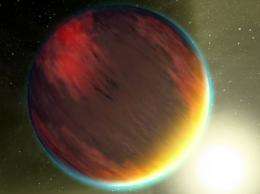Four new exoplanets to start off the new year!

It’s only a few days into 2012 and already some new exoplanet discoveries have been announced. As 2011 ended, there were a total of 716 confirmed exoplanets and 2,326 planetary candidates, found by both orbiting space telescopes like Kepler and ground-based observatories. The pace of new discoveries has accelerated enormously in the past few years. Now there are four more confirmed exoplanets to add to the list.
The four planets, HAT-P-34b, HAT-P-35b, HAT-P-36b, HAT-P-37b all have very tight orbits around their (four different) stars, taking only 5.5, 3.6, 1.3 and 2.8 days to complete an orbit. Compare that to Mercury, which takes 87.969 days and 365 days of course for Earth.
They were found by astronomers with the Harvard-Smithsonian Center for Astrophysics which operates a network of ground-based telescopes known as the HATNet project. The first exoplanet discovery by HATNet, the planet HAT-P-1b, was in 2006.
They are all “hot jupiter” type planets, gas giants which orbit very close to their stars and so are much hotter than Earth, like Mercury in our own solar system. Mercury though, of course, is a small rocky world, but in some alien solar systems, gas giants have been found orbiting just as close to their stars, or even closer, than Mercury does here. HAT-P-34b however, may have an “outer component” and is in a very elongated orbit. The other three are more typical hot Jupiters. They were discovered using the transit method, when a planet is aligned in its orbit so that it passes in front of its star, from our viewpoint.
So what does this mean? If exoplanet discoveries continue to grow exponentially as expected, then 2012 should be a good year, not only for yet more new planets being found, but also for our understanding of these alien worlds and how such a wide variety of solar systems came to be. We’ve come a long way from 1992 and the first exoplanet discoveries and things promise to only get more exciting in the future.
More information: The abstract and paper are here.
Source: Universe Today




















